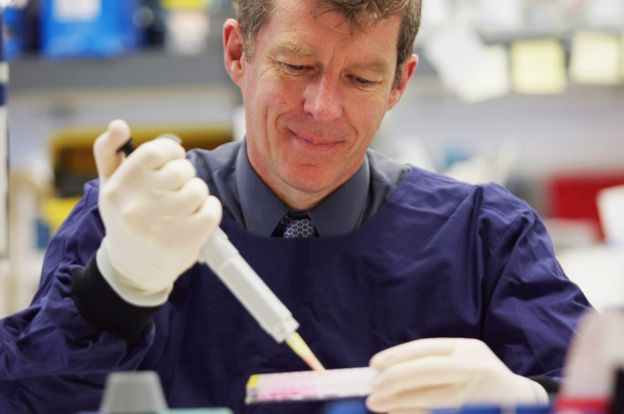This is a commentary by Kristof about health care in America and specifically about Dr. Lisa Hollier, an obstetrician-gynecologist, who is campaigning for better health care for women and abortion law reform. The medical journal Obstetrics and Gynecology reports that the US ranks below every nation in the Organization for Economic Cooperation and Development, except for Mexico, in maternal mortality. Around the world maternal mortality has been reduced by almost half since 1990; the US is a notable exception, where maternal deaths have become more common.

https://www.nytimes.com/2017/07/29/opinion/sunday/when-life-on-earth-was-nearly-extinguished.html This is an article in the Sunday Review by Peter Brannen about mass extinctions. Brannen has a new book called "The Ends of the World." There's more to the title but it is about the "big five" mass extinctions and about large scale volcanism as the driver. There is also a special issue of the journal Paleogeography, Paleoclimatology, Paleoecology, whose readers probably call it PPP. In the special issue, the point is made that volcanic releases of carbon dioxide "may have helped drive many of the most extreme die-offs in the earth's history." Brannen calls the US exit from the Paris Agreement "hare-brained" and mentions that we are on pace for a 4 degree Celsius warming of the earth by the end of the century.

https://www.nytimes.com/2017/07/28/opinion/greenhouse-gas-emissions-trump-funding.html This is a commentary in the NYT about a U of Colorado science center lab that houses a high-precision mass spectrometer that is able to detect fossil fuel contribution to carbon emissions, a critical aid to reducing these emissions. The Boulder lab is one of the few labs with the equipment that is capable of precise enough measurements. The lab was also dedicated to monitoring global greenhouse gasses exclusively. In fact, if the proposed budget cuts to climate science are approved, the whole national greenhouse gas monitoring program may be at risk.

http://www.bbc.com/news/world-australia-37211349 This is an article from BBC news reporting that after ten years of administering the HPV vaccine, the death rate due to cervical cancer has decreased 50% . In the US the cervical cancer vaccine has not achieved the approval rating as elsewhere and the results are not as spectacular. There are still several thousand women who die from cervical cancer in the US. The vaccine given protects against two strains and is being replaced with a vaccine the protects against nine strains. Some types of oropharyngeal cancer - the cancers inside the mouth that are caused by these viruses.

https://www.nytimes.com/2017/07/31/well/no-crying-over-dry-eyes.html This is an article from the NYT about the perils of "dry eye" also known as keratoconjunctivitis sicca, which sounds more serious. Eye drops, sold over the counter, are mainly methylcellulose, but they prevent burning and protect the eye after sun exposure and long hours at the computer. Which brings up the functions of tears, the components of which include 1,500 proteins (who knew?). I'm going to start using my eyedrops today.

https://www.nytimes.com/2017/07/31/science/dogs-shelters-adoption-behavior-tests.html This is an article from the NYT about the unreliability of dog obedience testing trials which determine whether the shelter dog is euthenized as a danger to people. Personal note: I adopted a shelter dog newly returned by the adopters after clamping its mouth (no blood) on a child's hand. The dog did nip a couple of people in the twelve years we had her (who were entering out house) but certainly would have been euthenized. There is serious scrutiny being given the shelter tests which are now regarded as poor predictors of whether the dog will be violent since one of the false negatives (negatives can be considered worse for people than false positives because the positives are killed) resulted in a death. One of the points made in the article relates to the shelter environment itself as evoking aggression. One test of dog-on-dog aggression showed that dogs reacted more aggressively to a fake dog than a real one. Shelter staff could carefully observe the interactions between the dog and other dogs and shelter employees in order to make the life-or-death decision.

https://www.nytimes.com/2017/08/02/opinion/fda-smoking-nicotine.html This is an op-ed piece by Robert Proctor, a science historian, about nicotine addiction.A fascinating statistic: if the rate of present consumption of cigarettes continues until 2015, 17 million more Americans will die of tobacco-related illnesses. I wonder what the statistic would be if if no one smoked any more cigarettes. I always wondered why nicotine in consumables wasn't made illegal (tobacco lobby) and this article answered my (naive) question. The FDA is barred from requiring the removal of nicotine from cigarettes but they can mandate the reduction by 99%, so they are minimally, or non- addictive. The Goldilocks optimum is between 1 and 2 percent, by weight, which is addictive. Reducing by a factor if ten would make it very difficult for cigarettes to become addictive, and, if addiction did result, not hard to quit.

http://abcnews.go.com/Technology/wireStory/scientists-id-tiny-prehistoric-sea-worm-50-head-49013050 This is a piece from abc news about a report in Current Biology about the identification of the 4 inch long capinatator praetermissus fossil from the Cambrian explosion about 541 milliuon years ago. Scientists say these fossils are so different from any previously found that they represent not only a new species but a new genus, a grouping larger than species. It is an ancestor of the worm grouping called arrow worms, which are abundant in the world's oceans.
https://www.nytimes.com/2017/08/02/science/gene-editing-human-embryos.html This is a report from the NYT of a Nature report on the use of a novel gene editing technique to remove a deleterious mutated gene from a human embryo. As used in the genetic engineering of human beings, this technique has received widespread scrutiny as it may lead to a new type of eugenics, in which people would pay for the inclusion of certain culturally valued traits and the exclusion of less valued ones. Scientists at the Oregon Health and Science Institute along with colleagues successfully fixed a mutation that affected the heart and leads to sudden death.

https://www.nytimes.com/2017/08/07/health/atheists-religion-study.html?_r=0 A report in the NYT about a study published in Nature Human Behavior about people's beliefs about religion. People were given a questionnaire asking them to indicate their religion (or lack thereof) and, given a description of a sociopath with gory criminal details provided, asked whether this person was religious or non. Overwhelmingly, most people chose "non." This is contrary to the actual religious affiliations of serial killers who have been studied, who are sometimes religious believers and sometimes not.

https://www.nytimes.com/2017/08/07/climate/climate-change-drastic-warming-trump.html The NYT obtained a copy of a climate change report saying the average US temperature has risen steeply since 1980, directly contradicting the assurances of President Trump and his cabinet. The report is a special section of the National Climate Assessment and the National Academy of Sciences has signed off on it but the president hasn't viewed it, or agreed to release it yet. A small difference in the global temperature makes a big difference. "The difference between a rise in global temperatures of 1.5 degrees Celsius and one of 2 degrees Celsius, for example, could mean longer heat waves, more intense rainstorms and the faster disintegration of coral reefs."

http://www.ledger-enquirer.com/news/business/article165833912.html This is an article from the inquirer about the attempt by the Army Corps of Engineers to keep an invasive species of carp out of the Great Lakes. I have just completed a book called "The Life and Death of the Great Lakes" on the subject. The Asian carp abounds in the Mississippi and its tributaries but it would not take much to breach the barrier into the Great Lakes. The plan to restrict the invading fish includes technologies such as underwater noisemakers, electronic dispersal barriers (the book said that they already have the latter) and a new lock, costing $275 million. These measures would protect the Great Lakes fishing industry.
https://www.forbes.com/sites/judystone/2017/08/06/germs-on-your-kitchen-sponge-get-a-grip/#6cf94fb9746e This is an article from Forbes in response to a study publicized by the NYT cautioning people about the germs in their sponges. Forbes finds that the few microorganisms that survive sterilization recolonize the sponges. One of the bacteria, Acinetobacter, causes infections in people who are in the ICU. There was no salmonella or campylobacter or other organisms that cauxe food poisoning. Conclusion: if you want to worry about catching an infection from an object: worry about your cell phone. In a study of 200 hospital workers, 95% of the phones carried nosocomial (hospital-acquired) infections, including MRSA.

https://www.nytimes.com/2017/08/09/science/dinosaurs-flying-mammals-squirrels.html?_r=0 Article by Carl Zimmer in the NYT reporting a Nature study of flying mammals in the Mesozoic, the Age of Dinosaurs, done at the University of Chicago. In the 1990's paleontologists found entire fossils of mammalian skeletons containing even impressions of skin and hair. These and other newly found fossils allow scientists to draw in previously unknown branches of the mammal family tree. One skeleton, Volaticotherium, appears to have been able to fly.

https://www.nytimes.com/2017/08/10/health/gene-editing-pigs-organ-transplants.html A report in the NYT of a Science publication about the increasing possibility of using pig organs in human transplantation. Piglets were created that had human organs with their DNA edited to remove diseases, like the pig version of the HIV virus and other retroviruses, that could be transferred to the human recipients of the transplants. This is an important development and carries forward the treatment of diabetes patients with pig pancreas cells and heart valves from pigs rescue heart disease sufferers. Animal rights activists should not be more concerned than they are with the many pigs raised for the human diet.







